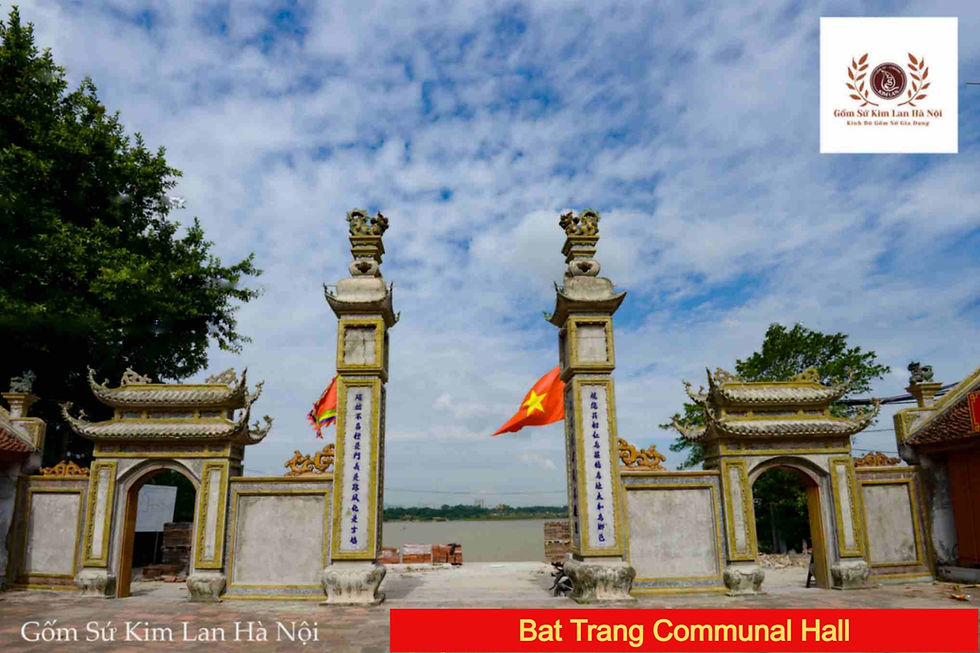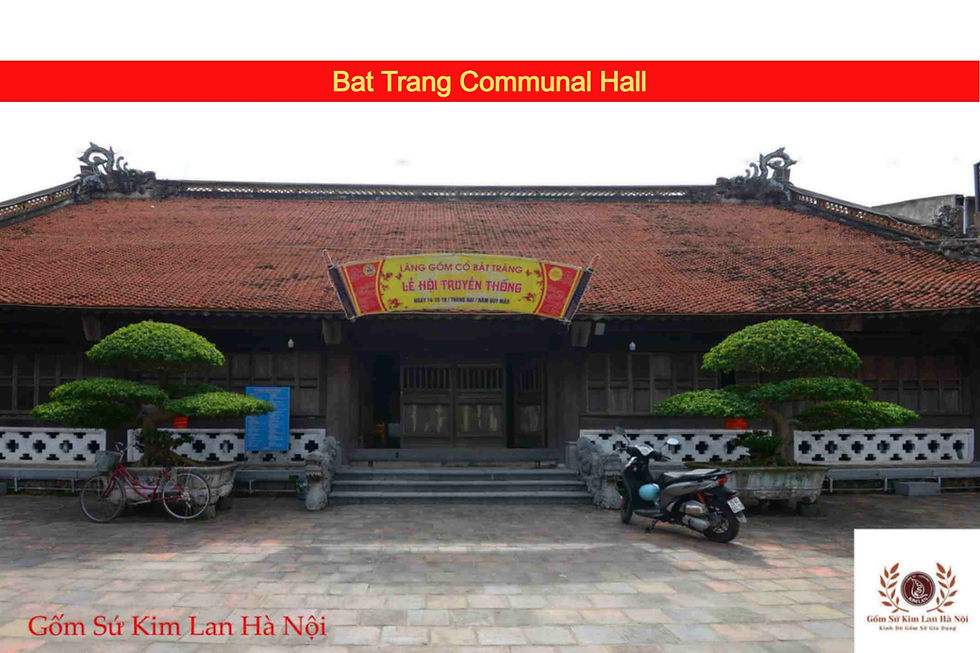Bat Trang Communal House - A Precious Cultural Heritage of Vietnam
- Nguyễn Ngọc Phóng

- 15 thg 10, 2023
- 3 phút đọc

I. Introduction
The Bat Trang Village and Bat Trang Communal Hall are vital components of Vietnam's cultural heritage, celebrated for their unique history, architecture, and culture. Located along the banks of the Red River, this place represents the quintessential culture of ancient Kinh Bắc and embodies significant cultural and historical values. Bát Tràng Temple not only venerates deities but also reflects the respect and reverence of the people for the traditional cultural heritage of the ancient Bát Tràng village. This article aims to introduce the history, architecture, festivals, and conservation efforts related to Bát Tràng Temple, as well as the ancestral lineage connected to the Bồ Bát Ninh Bình region.
II. History of Bát Tràng Temple
2.1. Origin and Early Development of Bát Tràng Temple
Initially, Bát Tràng Temple was just a small shrine located on the riverbank of the Red River. It was dedicated to worship the deity Bạch Mã Đại Vương, one of the six deities honored at the temple. The temple's original appearance was quite simple, featuring a thatched roof and facing the Red River.
2.2. Significant Phases in the Temple's History
The reign of Emperor Lê Dụ Tông in 1720 marked an important milestone in the history of Bát Tràng Temple. In 1720, the temple underwent reconstruction on the site of the old shrine, signifying the community's respect for it.
Through conflicts and wars, the temple had to undergo numerous renovations and restorations, with a notable one being after the resistance against the U.S. In 1993, the village residents collectively contributed funds to rebuild the temple in traditional architecture, demonstrating their perseverance and faith in preserving this cultural heritage.
2.3. The Role of Bát Tràng Temple in the History and Social Life of the Ancient Bát Tràng Village
Bát Tràng Temple not only venerates deities but also binds the community together, connecting ancestral lineages from Bồ Bát Ninh Bình to the village. The temple is also a spiritual center and the venue for traditional annual festivals, offering an opportunity for the people to display their reverence and pride in the culture and history of the ancient village.

III. Architecture and Structure of the Temple
3.1. The "Nhị" Design and Structure
Bát Tràng Temple features a "Nhị" design, comprising two symmetrical courtyards, including the main hall and the rear hall. The main hall is dedicated to the worship of deities and is where rituals take place, while the rear hall typically accommodates clergy and officials. This design symbolizes balance and harmony, reflecting the "yin and yang" philosophy of East Asia, signifying the interplay of complementary forces.
3.2. Key Structures within Bát Tràng Temple
Nghi Môn: The main entrance to the temple, often adorned with ornate floral patterns and couplets.
Tam Quan: The area representing the interaction between the external and internal parts of the temple, embodying the transcendence of three material elements according to Eastern philosophy.
Bắc Môn and Nam Môn: Secondary gates leading to and from the temple, often intricately decorated.
Temple Courtyard: The space for hosting traditional festival activities, especially during traditional festivities.
Giải Vũ: The location for artistic performances and displays during festivals.
IV. Conclusion
Thank you for delving into Bát Tràng Temple, a precious cultural heritage of Vietnam. Bát Tràng Temple is an emblem of the perfect blend of traditional architecture, spirituality, and folklore. The village community and the ancestral lineages from Bồ Bát Ninh Bình have collectively preserved and restored this temple, sustaining and promoting their traditional cultural values.
Preserving and developing traditional cultural heritage is a crucial challenge in the modern age, where changes and globalization impact cultural heritage worldwide. Bát Tràng Temple is a testament to the love and perseverance of the community in upholding these values.
Besides preserving and safeguarding traditional cultural heritage, Bát Tràng Temple also has the potential for cultural tourism development. By showcasing and introducing local culture and history, Bát Tràng Temple can attract tourists from both within and beyond the country, contributing to local economic development and promoting mutual understanding between diverse cultures.
Ultimately, understanding the significance of Bát Tràng Temple is a way to honor and appreciate the value of Vietnam's cultural heritage. We should share and preserve stories about special places and people, like Bát Tràng Temple, to ensure they are never forgotten. Traditional cultural heritage is a precious part of the honor and identity of every nation.










Bình luận